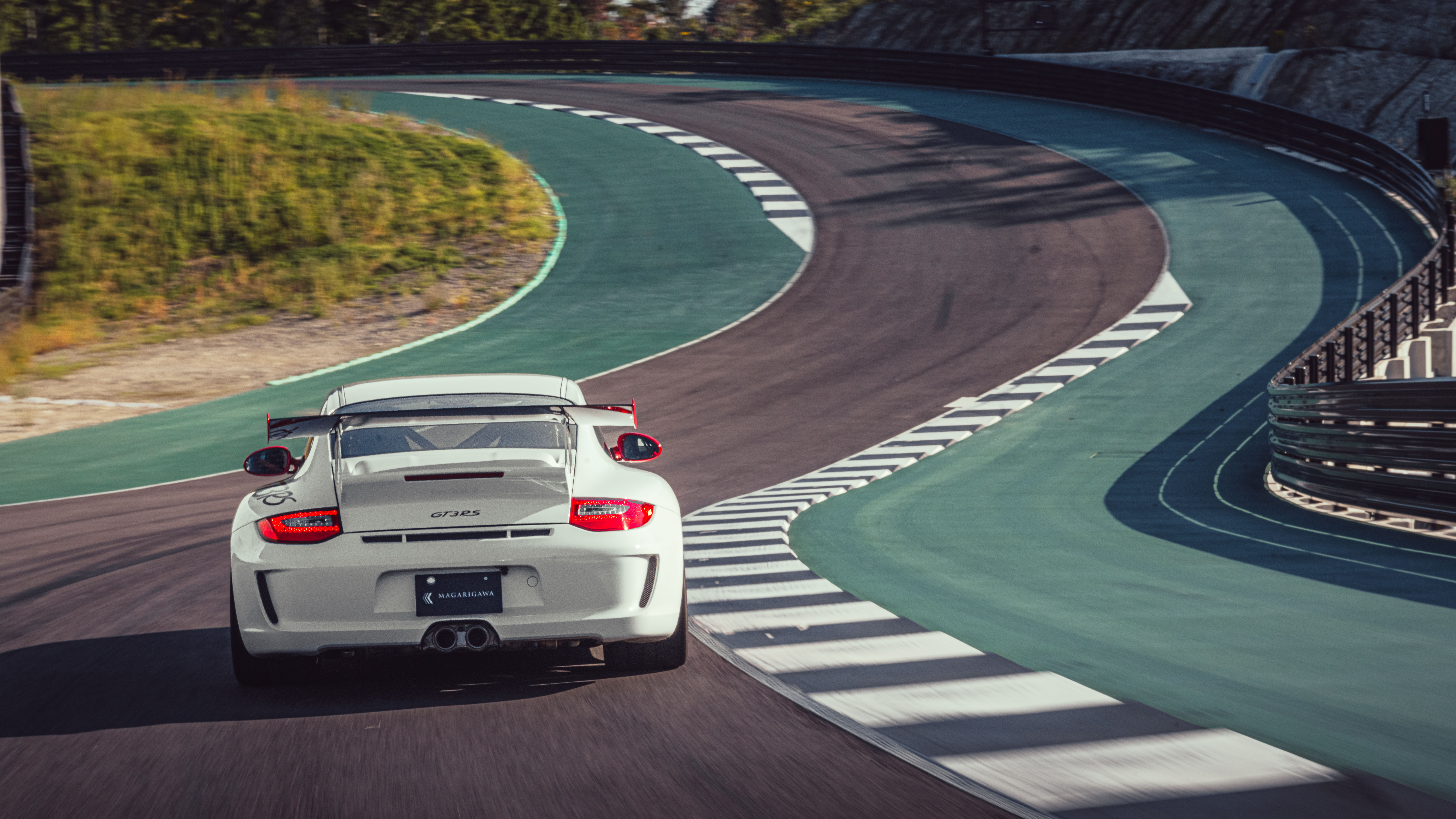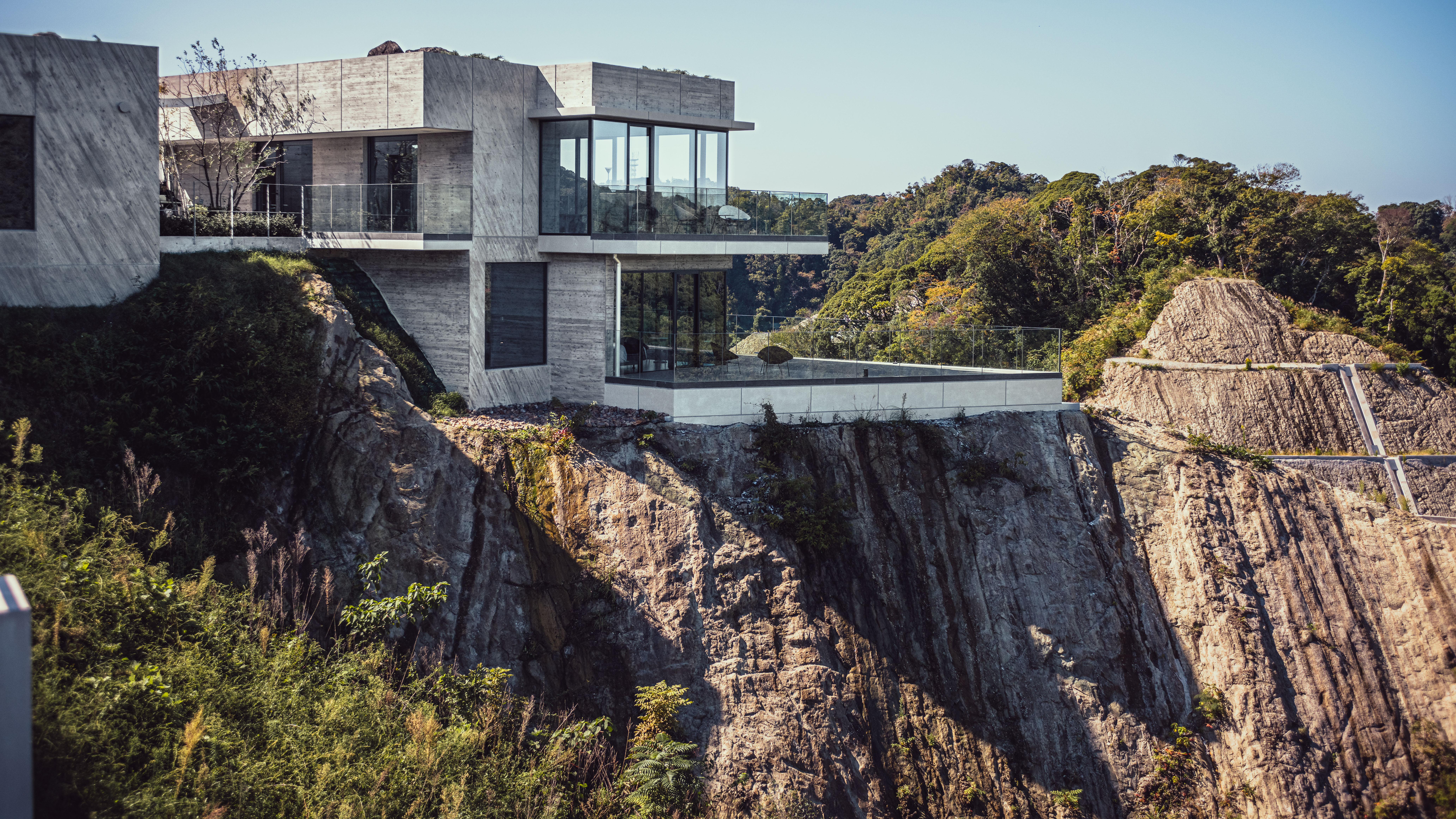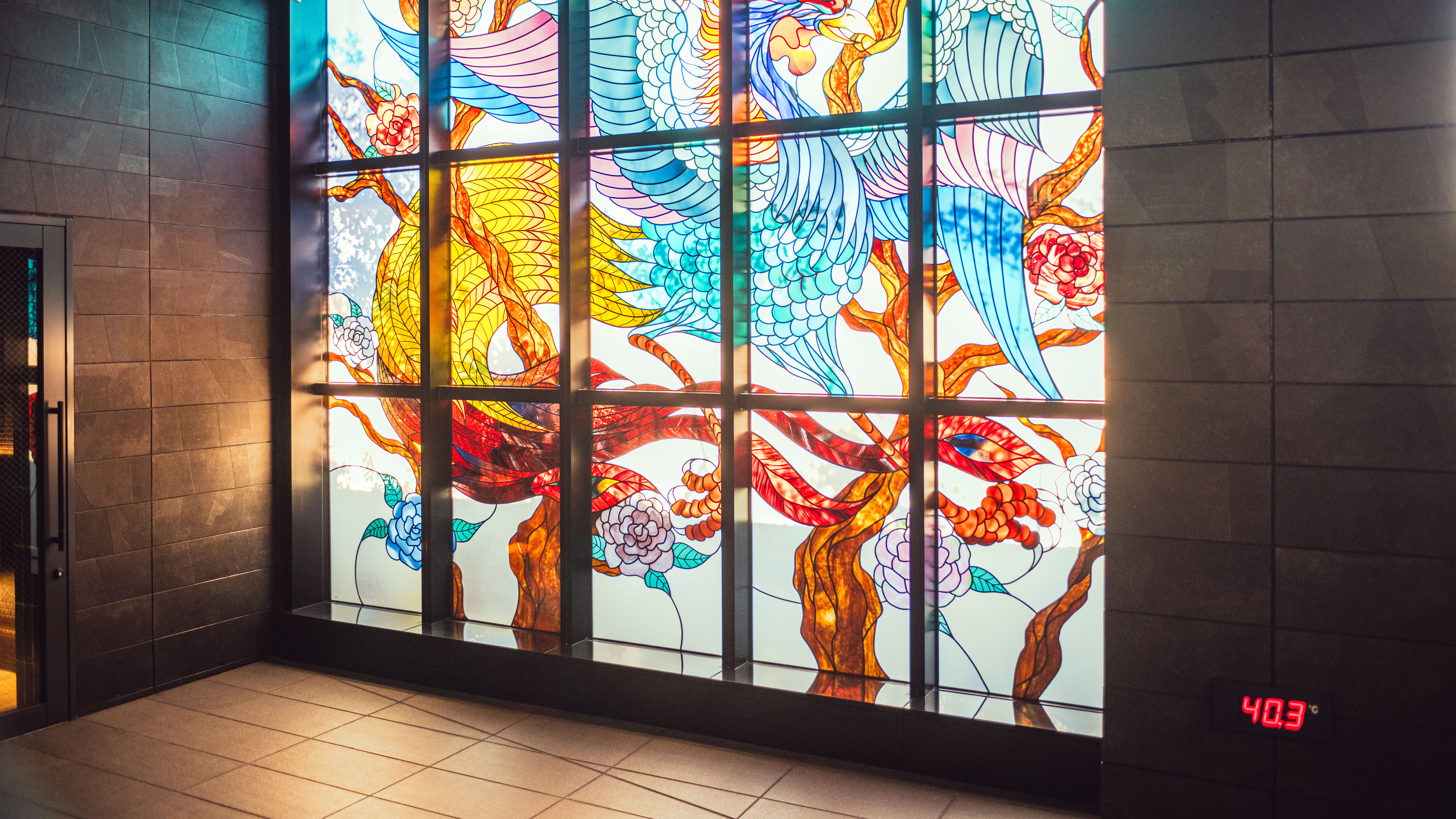
Welcome to Magarigawa, where Japan’s ultra rich come to play
Think Jurassic Park, but with a racetrack. And no T-Rexes
This is basically Jurassic Park... with a racetrack in it whispers photographer Toby as we enter the Magarigawa Club’s imposing main gates, themselves styled around the calm, tiered lines of a Japanese temple. Steep cliffs ramp out of the jungle on either side of our rented Subaru, unfamiliar caws and croaks flicking out from the underbrush. As a UK resident used to windswept, usually lightly industrial venues sheathed in chilly rain, the only thing that springs to mind is that this is about as far from Anglesey on a wet Tuesday morning as it’s possible to get.
And yet it is a Tuesday morning. The difference being that we’re currently halfway around the world in Japan, at the aforementioned Magarigawa Club, a private circuit that’s part Bond villain’s exclusive racetrack and part high-end spa, billed as the “world’s only luxury driving club”. There are ‘driving resorts’ in the US and Europe of course, but nothing quite like this, so we’ve come to investigate what Japanese supercar owners do when they want to actually drive rather than just pose in a congested megacity.
The track itself is located in an area called Minamiboso in Chiba, roughly an hour by car from Tokyo, or a short hop by helicopter. The latter being significant as we pass the pristine helipad. But that’s not all. On the pretty and landscaped lower reaches of the access road, we come across a modern and fully equipped fuel station. No nipping to the local garage between sessions for these track day enthusiasts, and no anaemic sandwiches on offer. And there’s a full-on motorsport workshop with multiple car lifts and professional looking crews next door to a temperature- controlled storage facility for several hundred cars. In the first three minutes, you realise Magarigawa is an entirely serious enterprise. Not flashy or ostentatious, but the whole thing reeks of stealth wealth – the kind of rich that speaks quietly but carries a jet black Amex.
Photography: Toby Thyer
As the road rises, it offers glimpses of what awaits at the top of the hill: a set of buildings that sweat traditional Japanese formality, with a twist of modern Tokyo. Up through the tunnel – the exit of which frames a single tree like a portrait in a gallery – and you’re into Magarigawa proper. And it is, bluntly, how the other half live. Or more precisely, the other 0.01 per cent live. The main building itself is the work of Tatsuya Ogawa of Tokyo-based architectural firm 16A, inspired by Shinden-zukuri, an architectural style that trips back to Japan’s Heian period. Now, basing one’s clubhouse on designs that were big style news when the calendar was still in triple digits might sound like a bad idea, but Magarigawa’s fusion of modern and traditional just works. It might be poking out like a crown on top of a mountainside thrusting up from a jungle, but even with some construction works still ongoing, the whole place is an absolute knockout, with views over Tokyo Bay.
It doesn’t stop, either. The racetrack loops around the central clubhouse on several different levels, so you keep catching delicious looking sweeps of corner or tempting straights from different vantage points, and it’s weirdly peaceful. You get the feeling that although this is a quiet day (we had to come when no VIPs wanted to use the track), Magarigawa is not the kind of place to get overrun. It’s the whole discreet thing – there’s no parking at the front of the main building, either – you rock up to a beautiful angled portico and get rid of the chauffeur or road car, then dip into the foyer.
Inside you’ll find an intensely opulent experience, but again, without the gaudy gold taps effect you can get in some old school European destinations. It doesn’t feel like a racetrack at all, with a Joyce Wang interior that’s more Scandinavian chic on steroids. There are male and female onsens (traditional Japanese hot spring bathing facilities drawn from nearly 1,000m underground) with their own giant stained glass windows, an infinity pool with views over the bay, a top-tier gym, yoga studio, trekking paths, a light-filled creche filled with books and toys and Baby Bugatti pedal cars worth more than my house. There are Zen gardens, restaurants, a cigar bar and soundproofed karaoke room. There is even, and this filled me with joy, a dog park for one’s pup. Now that’s attention to detail.
But that’s not even the best bit. In what appears to be the huge vaulted reception of a seven star hotel, you’ll notice airline ports on the pillars. Cars are parked between, and there are laser-operated autoroller doors at either end. This, my friends, is the pits. Not some breeze block garages lumped behind the main straight, but integral to the building, cleaner, brighter, more air conditioned and more luxurious than most London houses or surgically clean showrooms. It’s here that you’ll find your pit crew, supplied by the club, ready to change tyres, fettle and primp your car ready for a track day. The Owners’ Paddocks are a tier beneath the actual clubhouse, and they’re... even more bizarre. Insanely luxurious flats with their own parking and garaging, each has views of the track below, entertaining spaces, decks and bedrooms. This is billionaire balling.
But as impressive as all the unglitz and quiet style really is, it’s the track itself that provides the temptation and main attraction. If you drive a modern supercar, even the top of third gear is decidedly unsociable and you really need a dedicated track to explore and understand why you spent the money. And no, gunning it in Track mode down Knightsbridge doesn’t count. It’s a shame then that all I have is an, admittedly quite nice, Subaru Levorg STi estate hire car. Pleasant enough for tooling around in, but somewhat sloppy for track work, CVT and all.
Hideto Yasuoka comes to my rescue. Our host for the day and an accomplished racing driver himself (GT cars, various formulae and bizarrely a stint in Europe driving Formula Ford), Yasuoka-san is incredibly charming, endlessly knowledgeable, unfailingly polite and dangling the keys to a Porsche 911. But not any old 911: a GT3 RS 3.8 from 2011. White with red graphics, the same model that I tested over a decade ago. The car that provided my Porsche epiphany. Fate, then. So we fire up the flat six, buckle up and set off, barely slowing for the auto doors from the pits, and down the hill onto the track.
The circuit itself is not some lash-up, but designed by Tilke Engineers and Architects – of Hermann Tilke fame, F1 circuit designers extraordinaire. Think Baku city circuit, Sepang, Istanbul Park, Circuit of the Americas, Jeddah Corniche, Bahrain International, the Singapore Marina Bay street circuit, the list goes on and on from three decades of motorsport set design. It may be the craggy faced Hermann Tilke who fronts the business, but most of the practical design here was via the heir apparent son, Dr Carsten. And he’s done a bang-up job. Magarigawa’s 3.5km may seem bijou in comparison, but it’s clever. And pretty. Wedged into a natural valley, the top of the mountain was essentially decapitated and the spoil used to tier the natural V-shape. The circuit itself has 22 corners, an 800m main straight and features a descent of 16 per cent, with a cumulative ascent of more like 20. There’s elevation change to the tune of 250 metres, but it feels like more. At the top, you look out past the Sagami Bay to Mount Fuji, at the bottom, you’ve descended into lush green, diving down into the emerald green of the jungle sea.
Top Gear
Newsletter
Thank you for subscribing to our newsletter. Look out for your regular round-up of news, reviews and offers in your inbox.
Get all the latest news, reviews and exclusives, direct to your inbox.
And it is lightly epic. You sweep down into the forest, barrel down the straights, carve your way around the generous corners. It’s a playground, and the music is naturally aspirated Stuttgart brass. It’s a technical, demanding drive, made more complex by the view – sometimes you end up slowing down a bit just to take it all in. It feels useful, and utterly modern. It is not, however, unsupported: unsurprisingly, safety is a big deal. There are generous high grip run-off areas, all green and somehow camouflaging the expanses of tarmac, proper Tecpro barriers. There’s a virtual marshalling system via screens and cameras, all subtle, unobtrusive.
Magarigawa is not, however, a racer’s circuit, and is not billed as such. Strange as it may seem, it’s almost a gold-plated testing venue for both drivers and their machines. It’s described as a road course, though Magarigawa also runs shutdown private runs up the nearby Hakone Turnpike for members if you need your road to be literal. The technical uphill section towards the clubhouse is narrow and complicated with few opportunities to turn a grip advantage into a pass, and big horsepower cars would scruff small, light stuff on the straights. You could race there, obviously, but the options are limited. What it does do is offer the opportunity to learn, both in terms of driver form and mechanical function. The straights offer the opportunity to stretch even the fastest cars through the gears, the heavy braking zones an opportunity to really test the brakes to the limit. A couple of long sweepers and transitions will tell you how well a car translates grip, and the aforementioned serpentine uphill gives more than enough transparency to weight transfer and transitions. A couple of laps of Magarigawa is an automotive radiology department, you’ll see through a car within seconds. It’s a rollercoaster of a track, a theme park dedicated to horsepower and its enjoyment. And the whole place reflects sound in the best way.
As ever, even a mildly quick Porsche is a delight here, the GT3 RS lacking gravitational grunt on the straights (although the 3.8 revving out through third and fourth is still a semi-religious experience), but the precision and delicacy through the corners never gets old. Turn in very slightly on the brakes to keep some weight on the front tyres and then allow the car to settle before feeding in the power for corner exit, and there’s a deep sense of connection. For those with less experience, it’s also a place where you can explore limits in relative safety, learn, and become better. There’s driver training on offer, mechanical oversight and repeatability. They say it takes 10,000 hours of practice to become an expert, and Magarigawa is the place you can come to for logging flight hours. In the very unlikely event that you get bored, you can borrow another car – the experience would be very different in different machinery – and you’d get as much from a fast hatch as a mid-engined supercar.
Far too soon, it’s time to return – a member has popped over to test his REDACTED, and so we have to stop lapping. Which is a shame, because the Magarigawa Club really feels like a redoubt for those who still want to really see what their machinery can do, compel their automotive artworks into motion, give purpose to all that potential. The appeal isn’t that hard to fathom, and although this is a place created for the rich, it’s set up as a more inclusive space where you can bring your family and friends. It’s a place where you can introduce a new generation and despite the look, there’s been more than a few up here with more humble machinery. But once you look past all the obvious opulence and exclusivity, you see the thing that matters most – it’s a place for cars built by people who love them. They just love them with slightly larger wallets than most.











